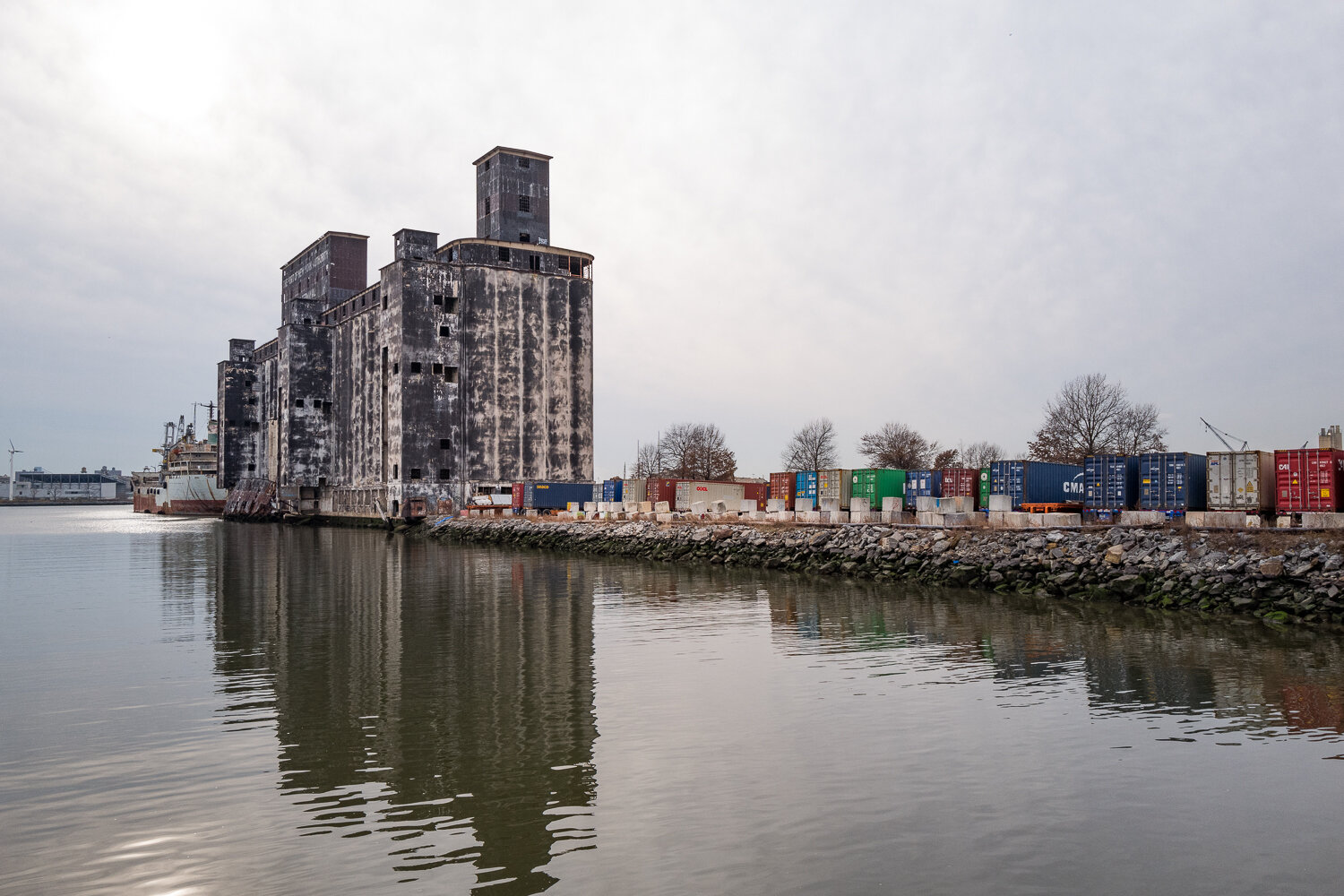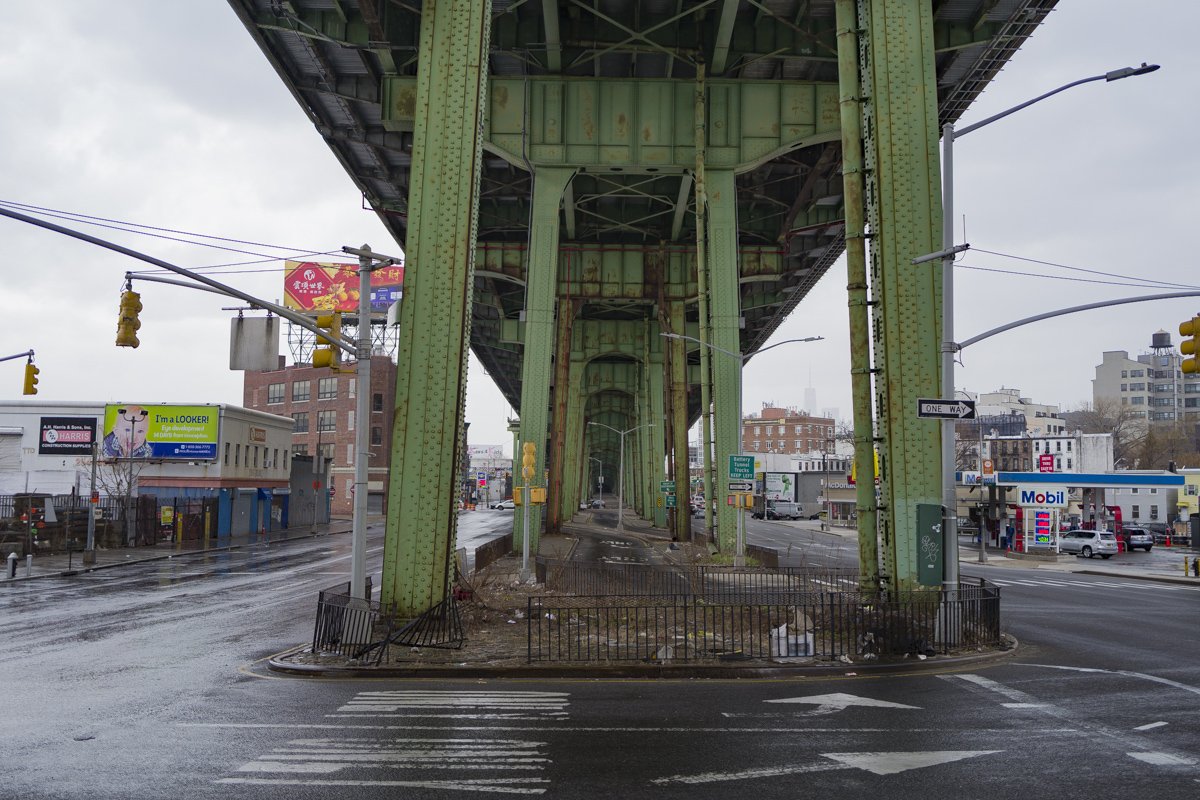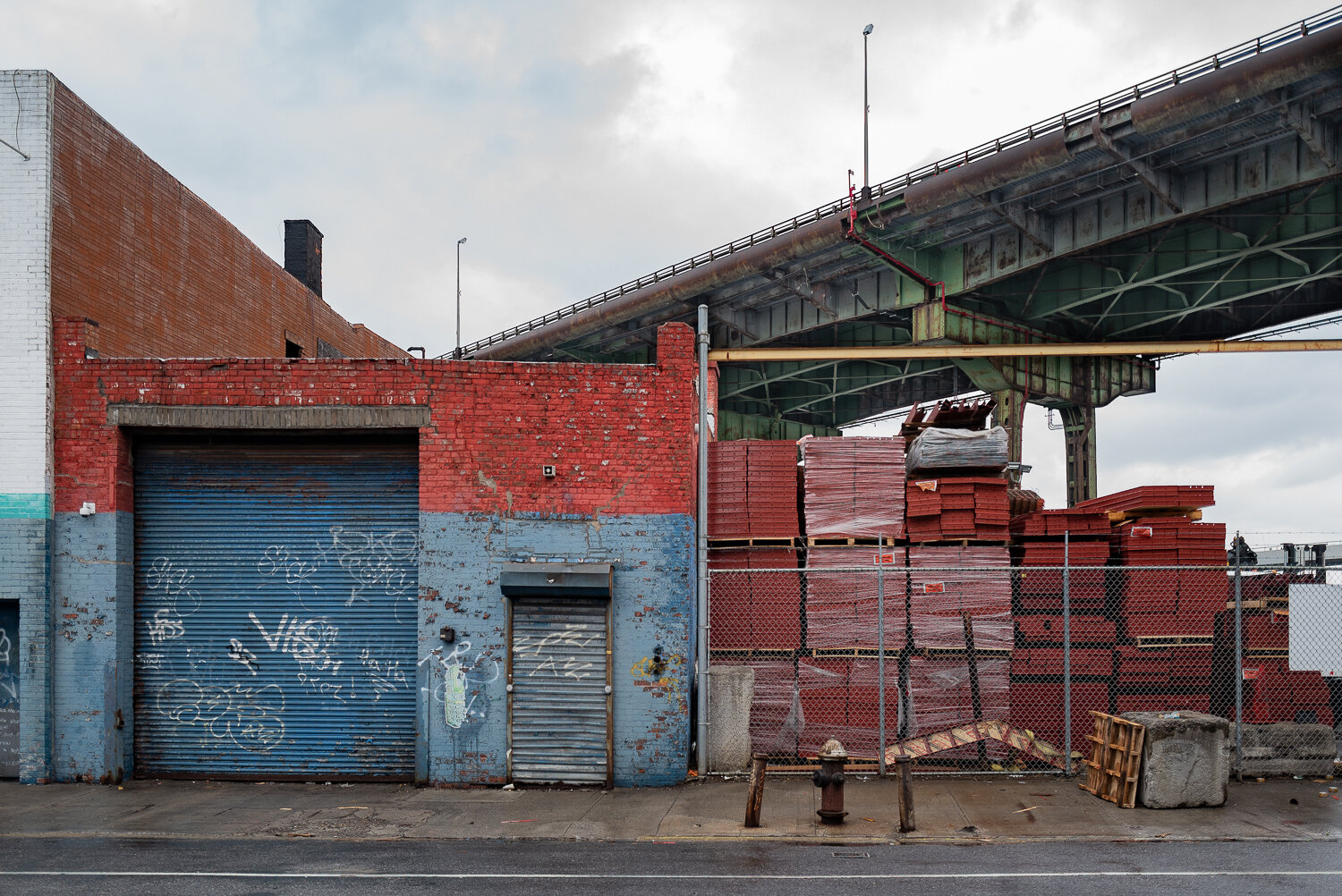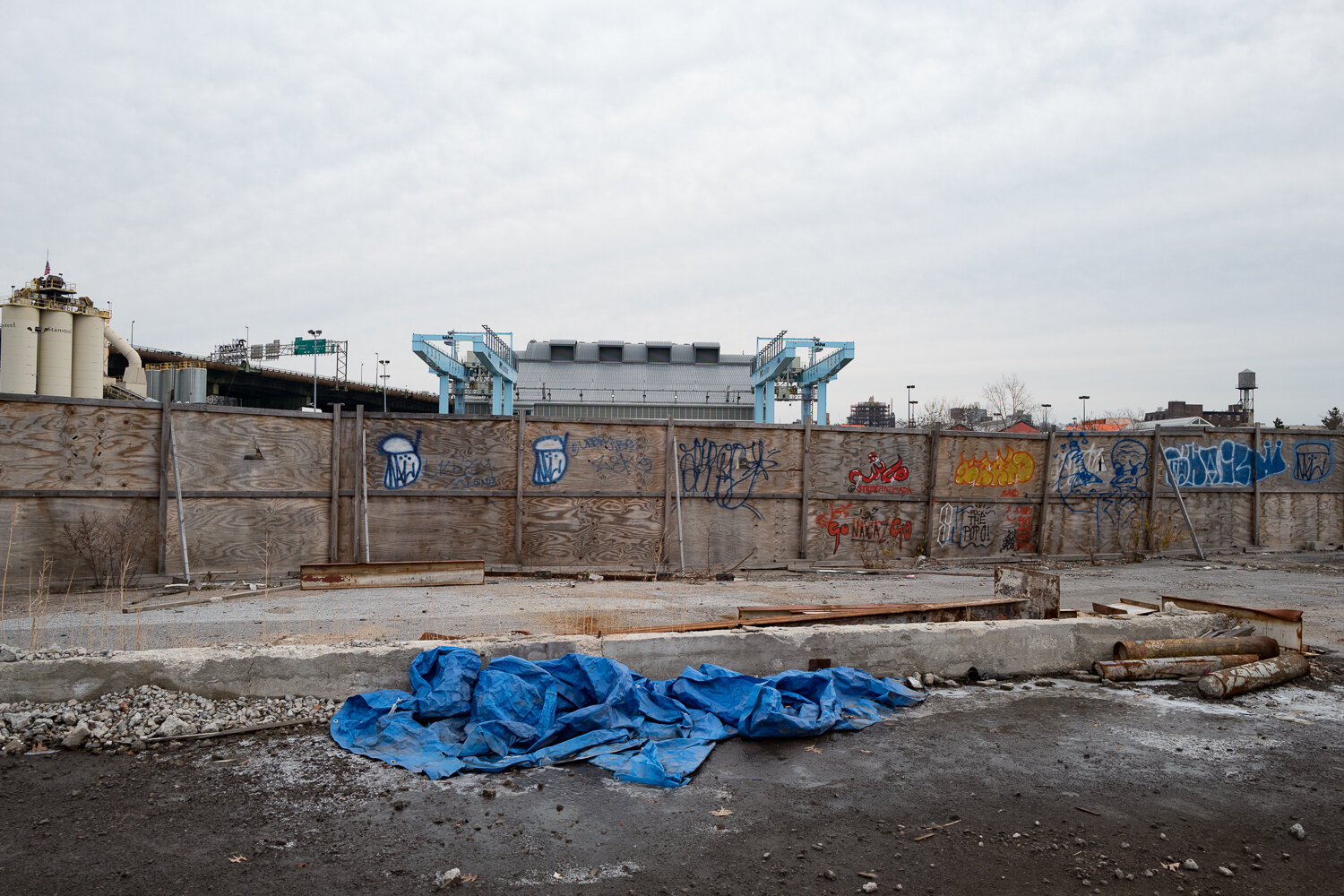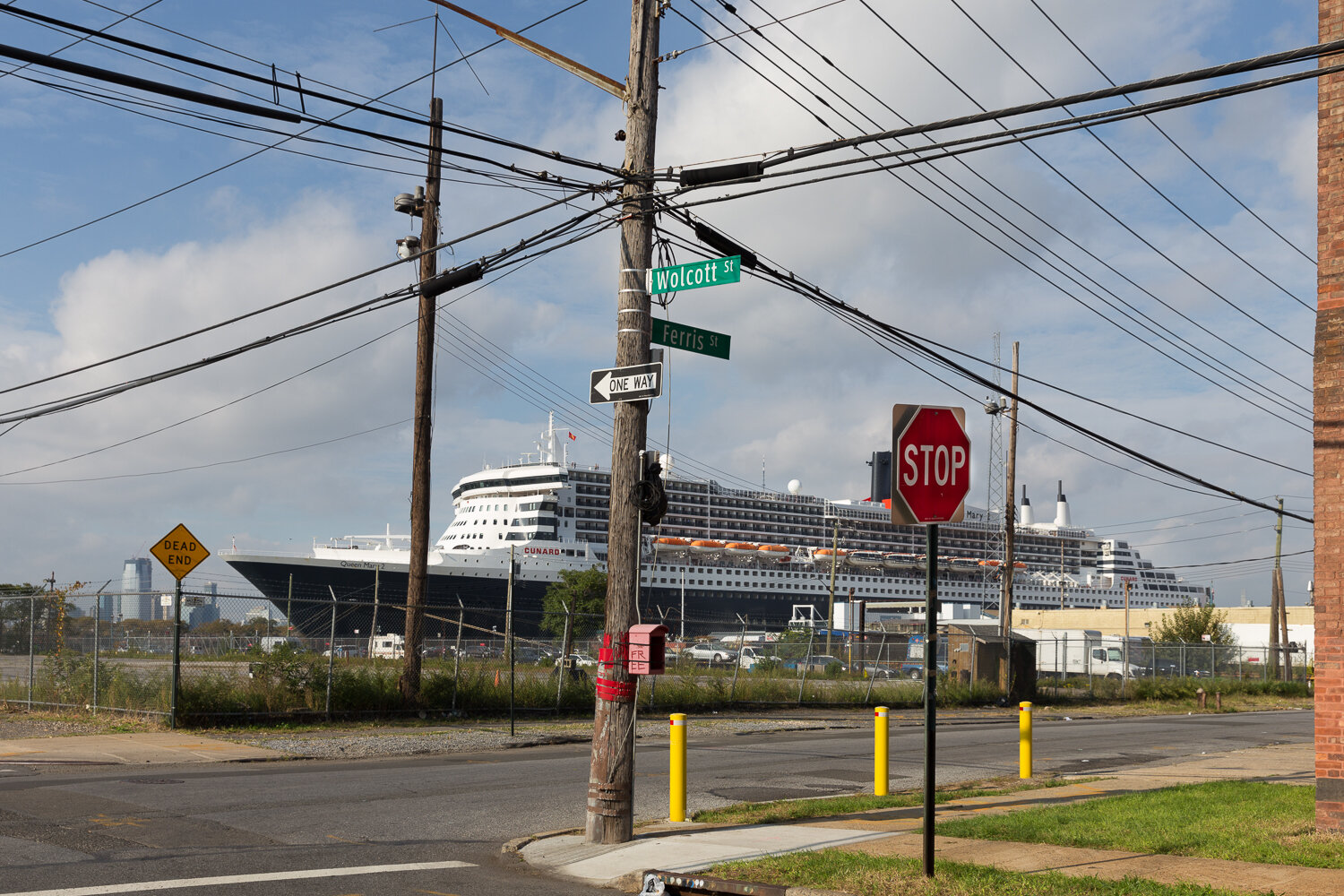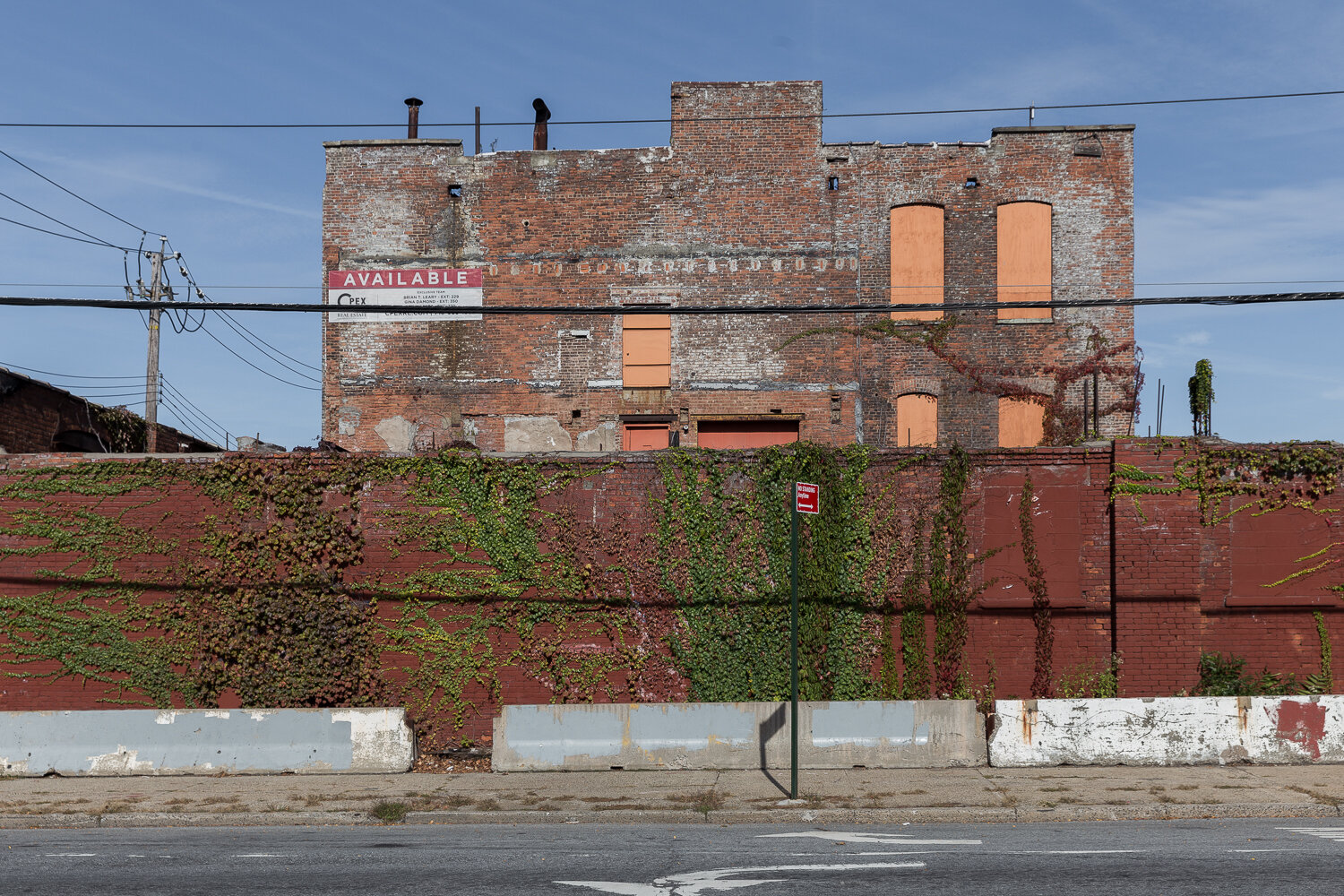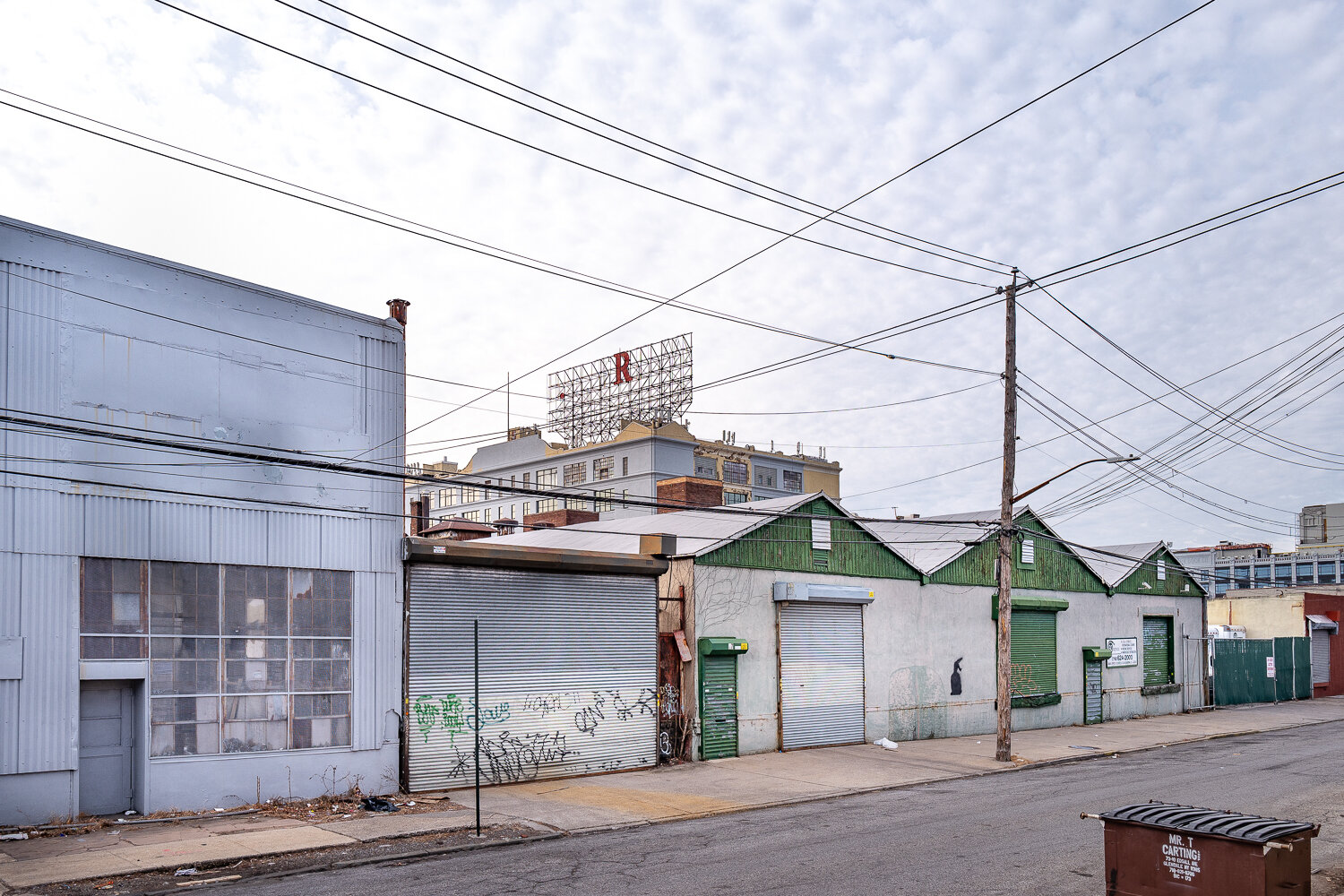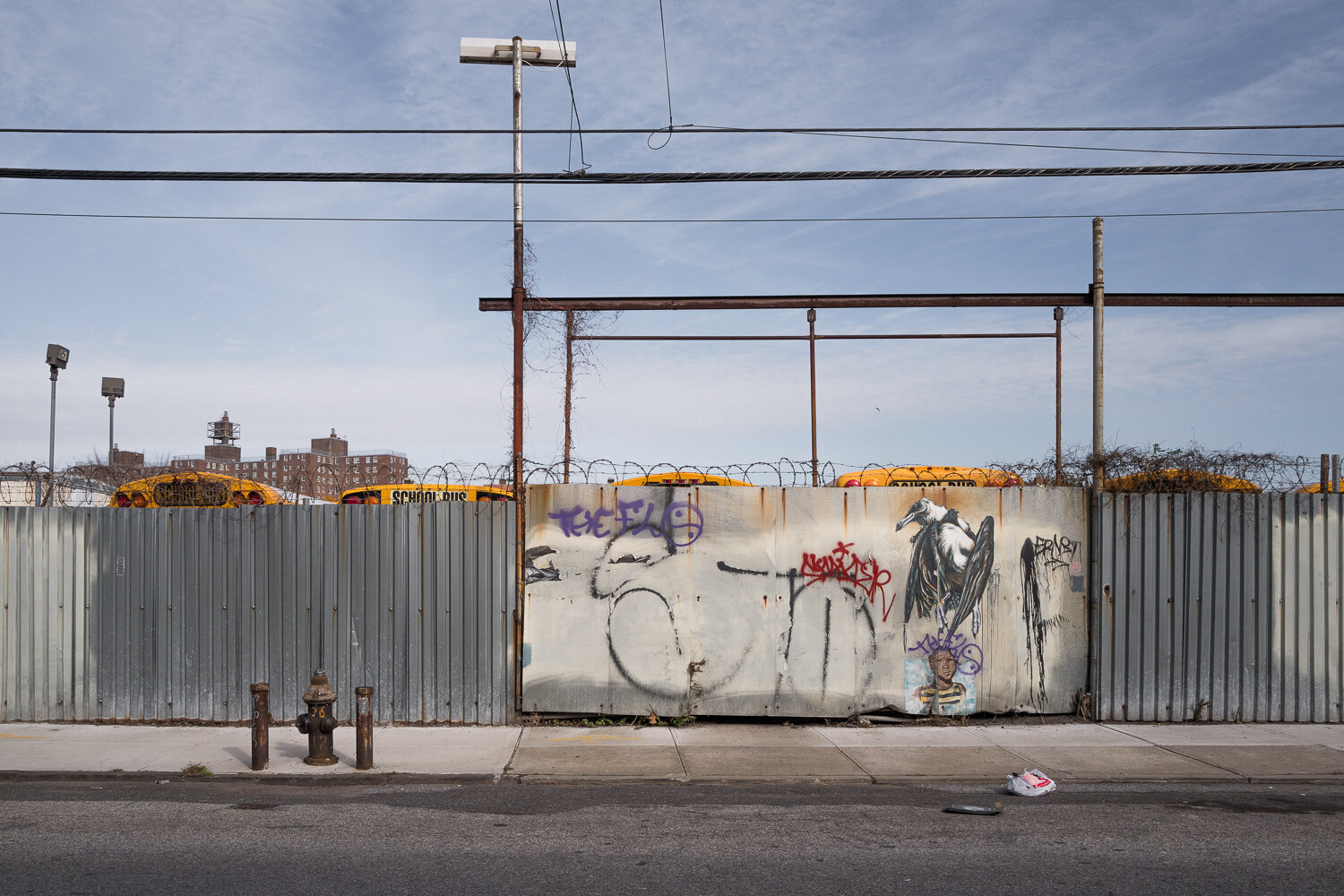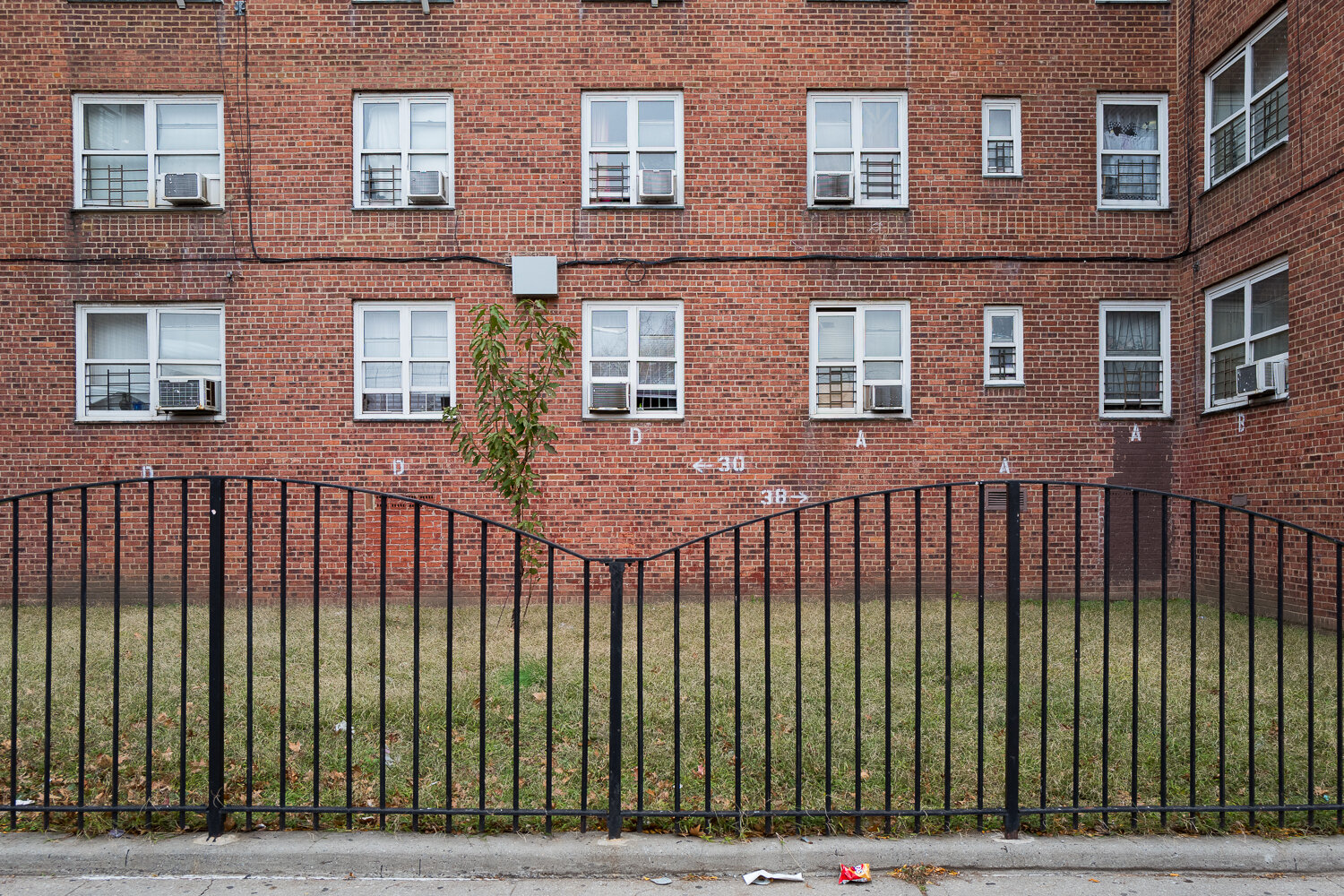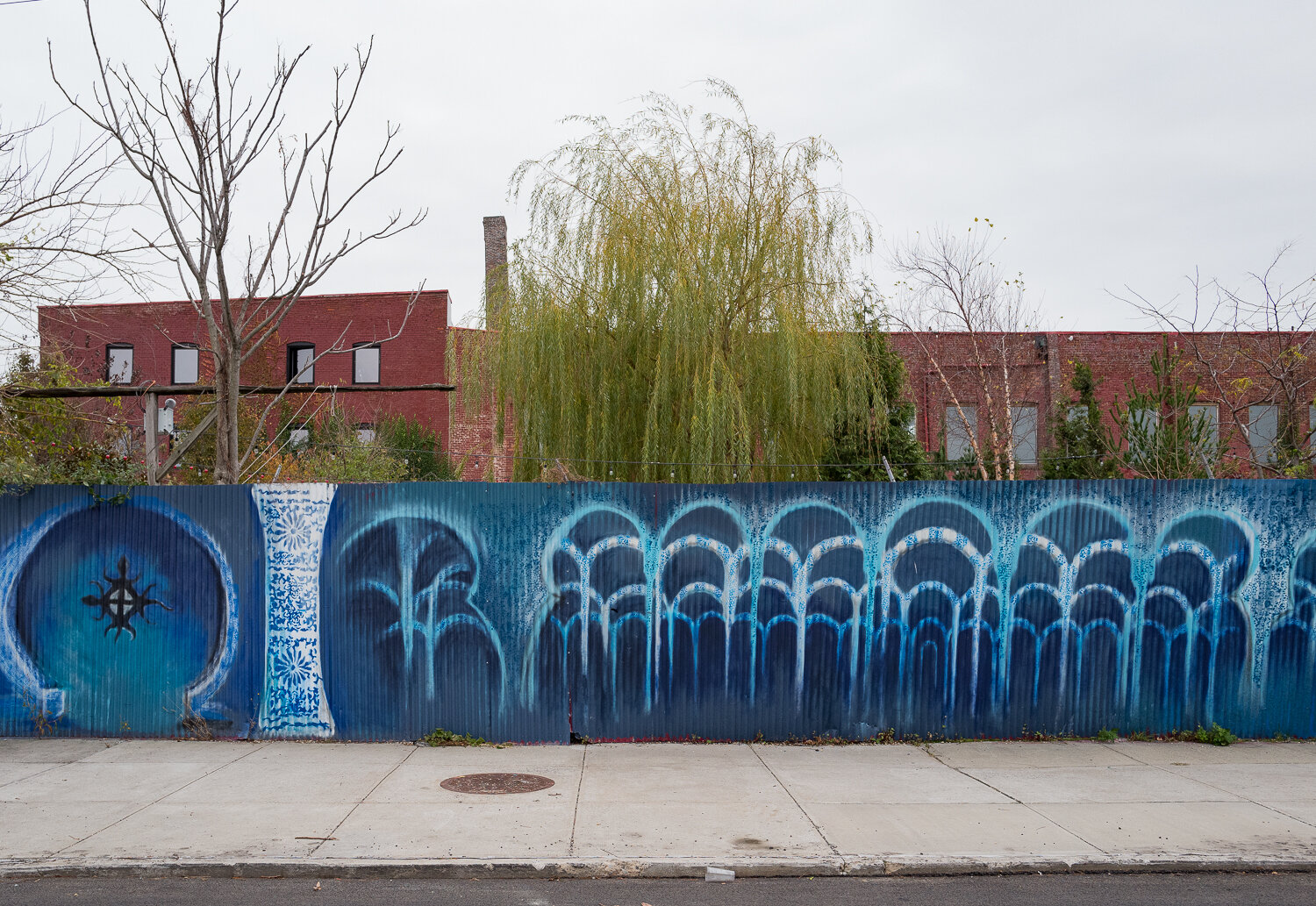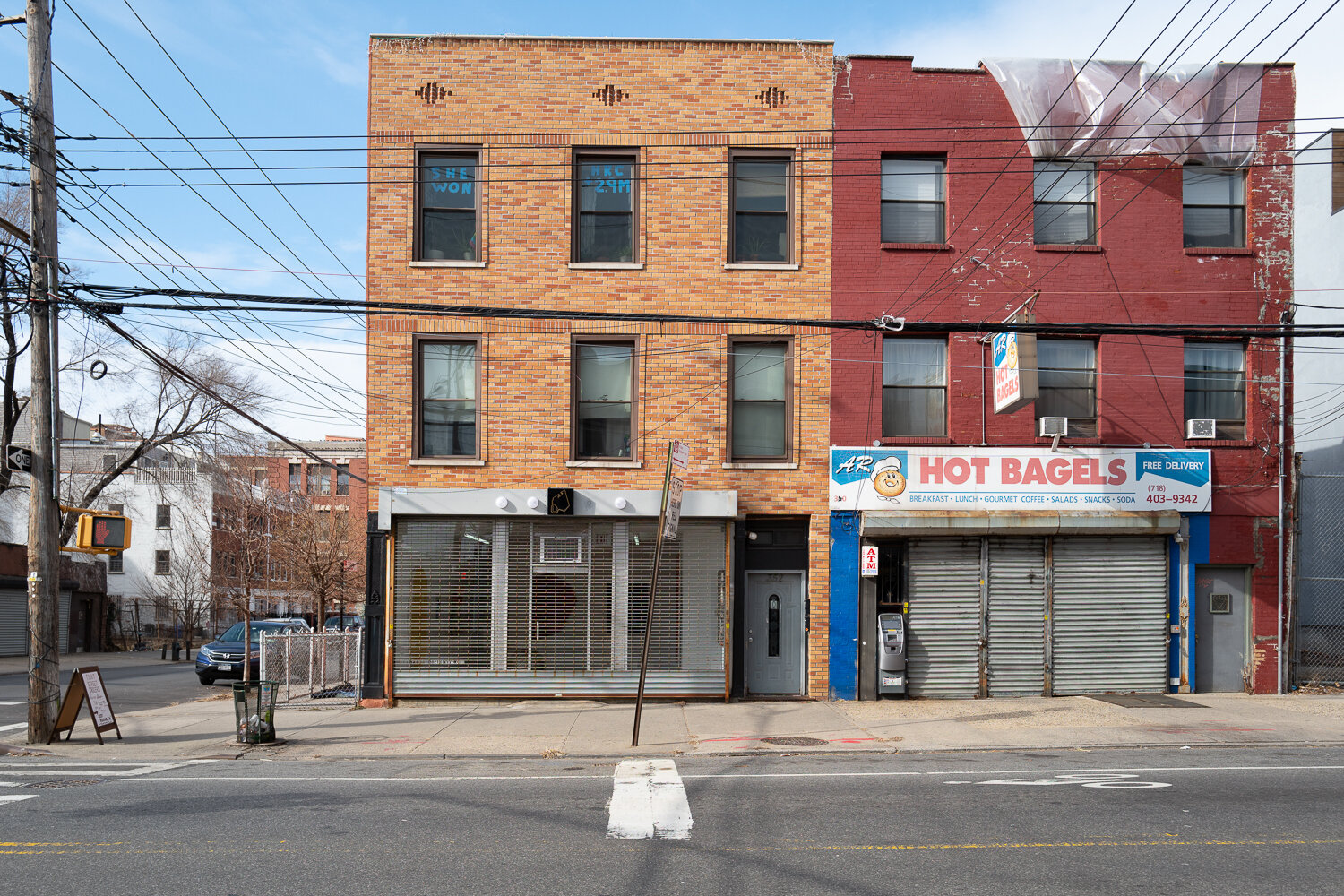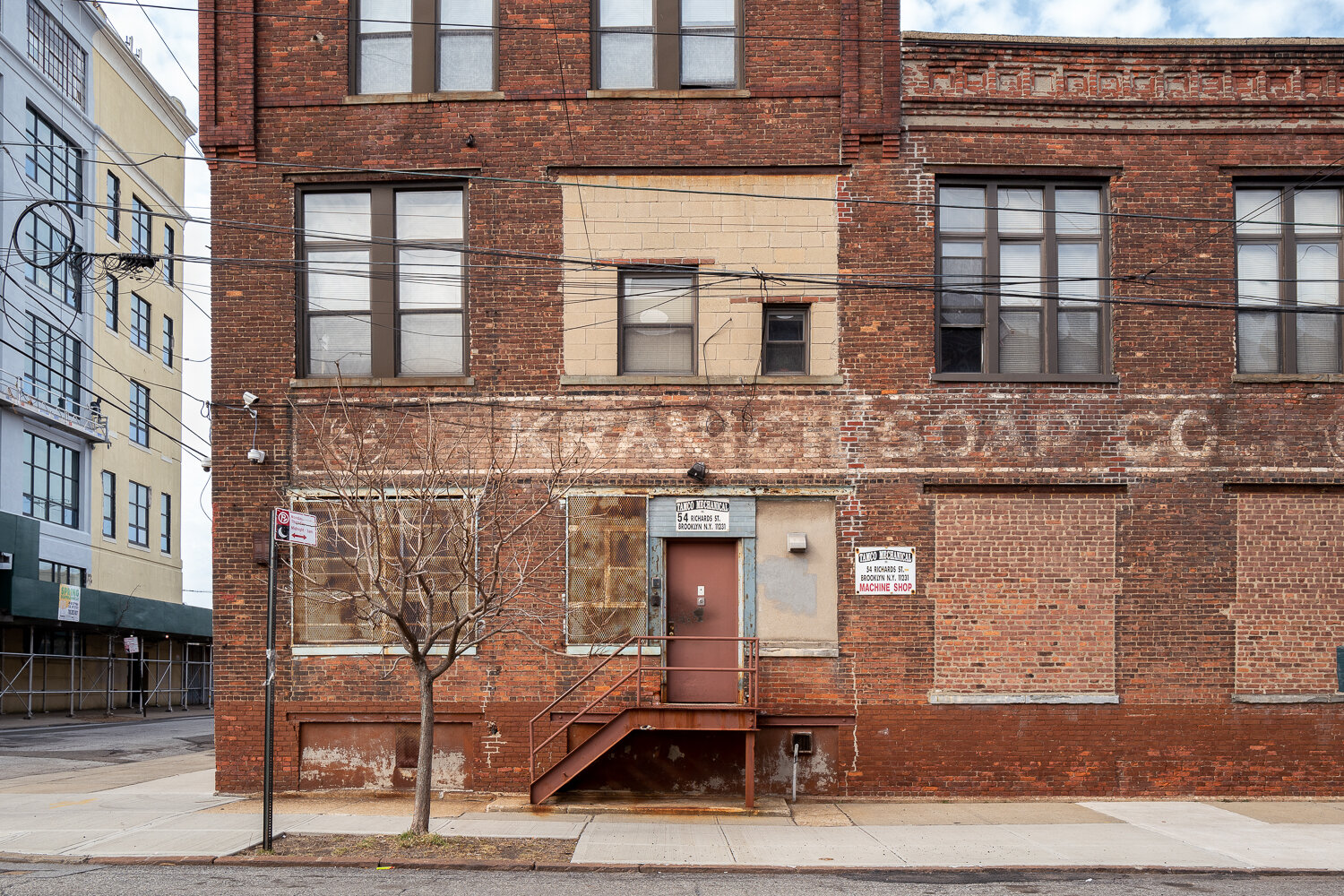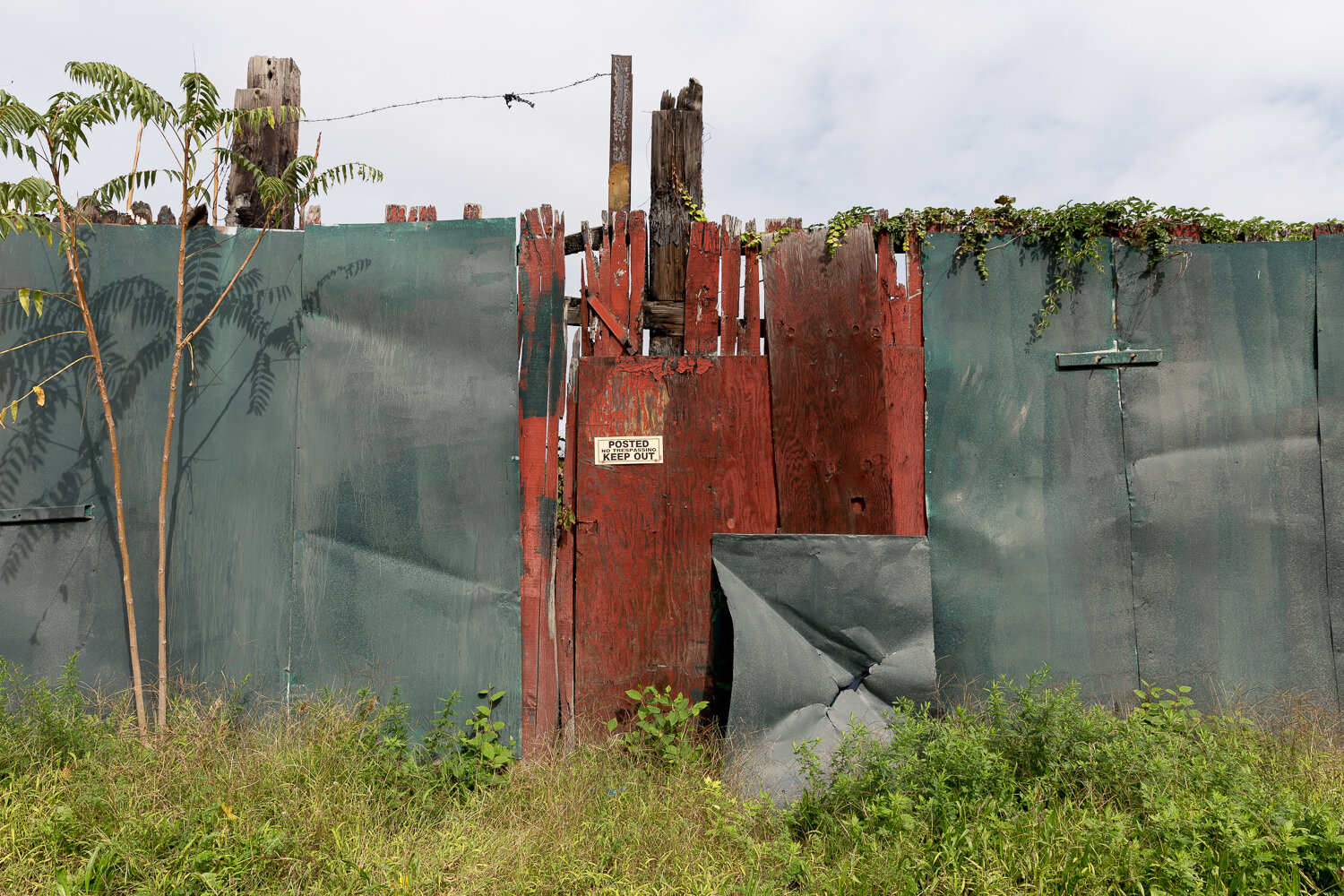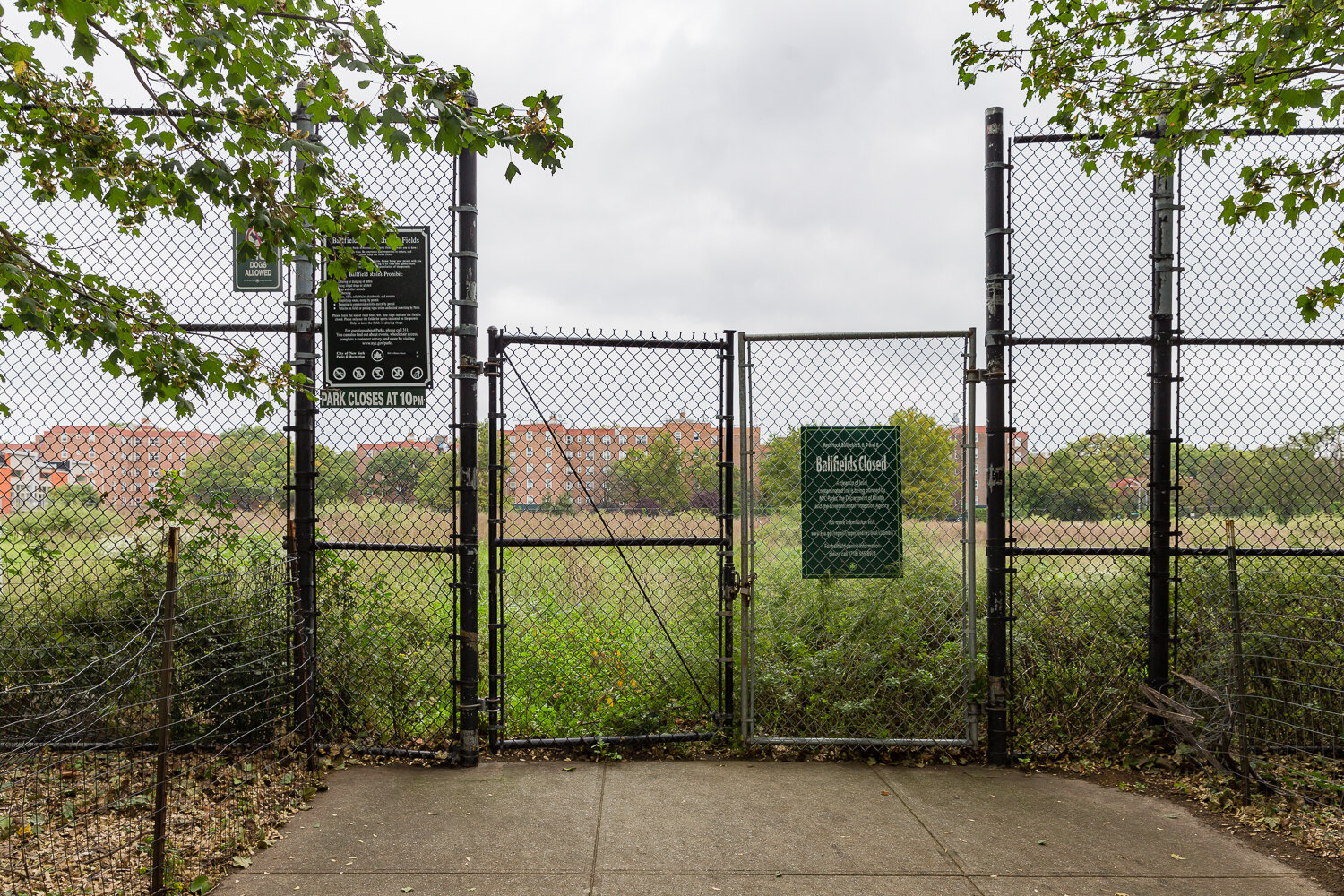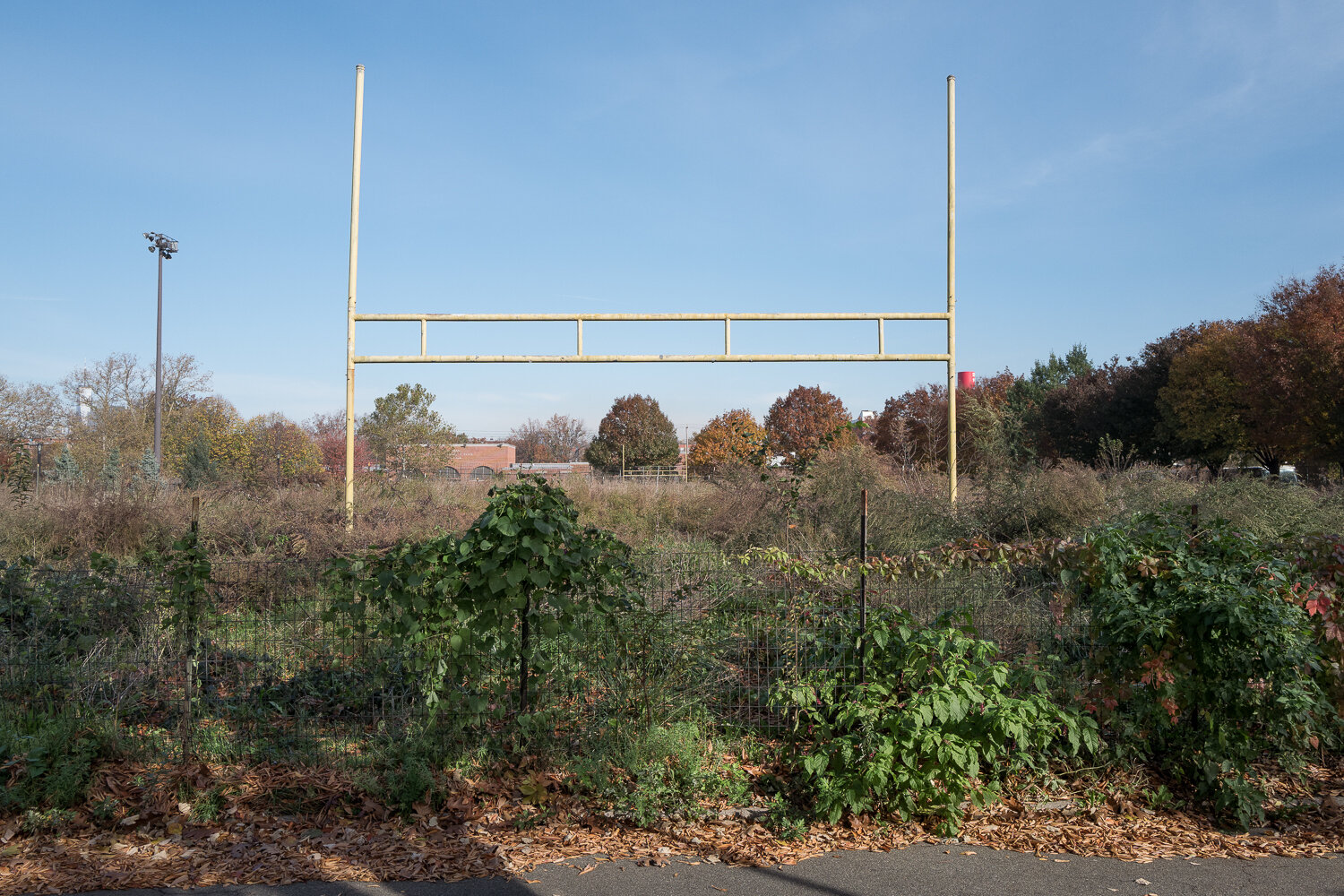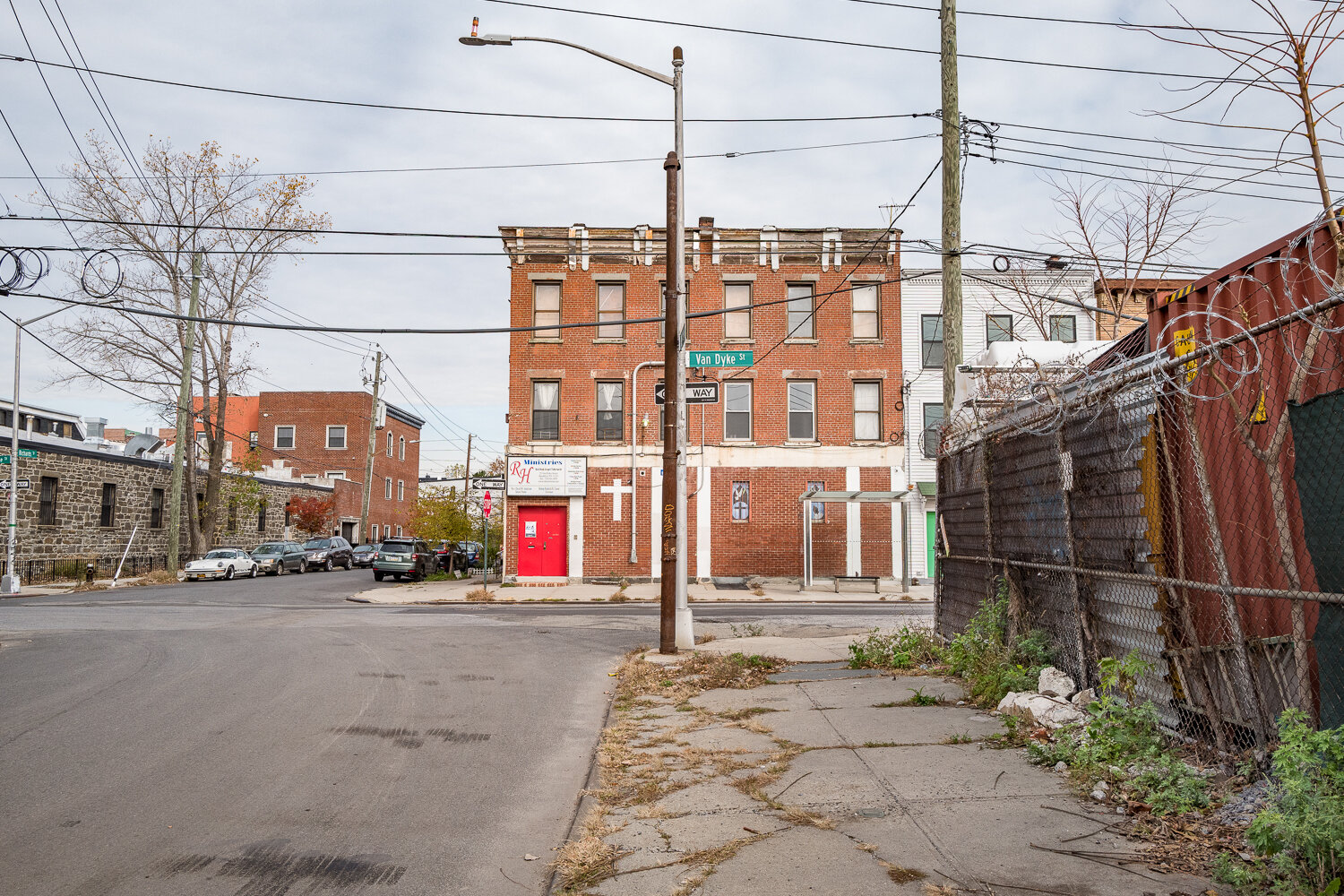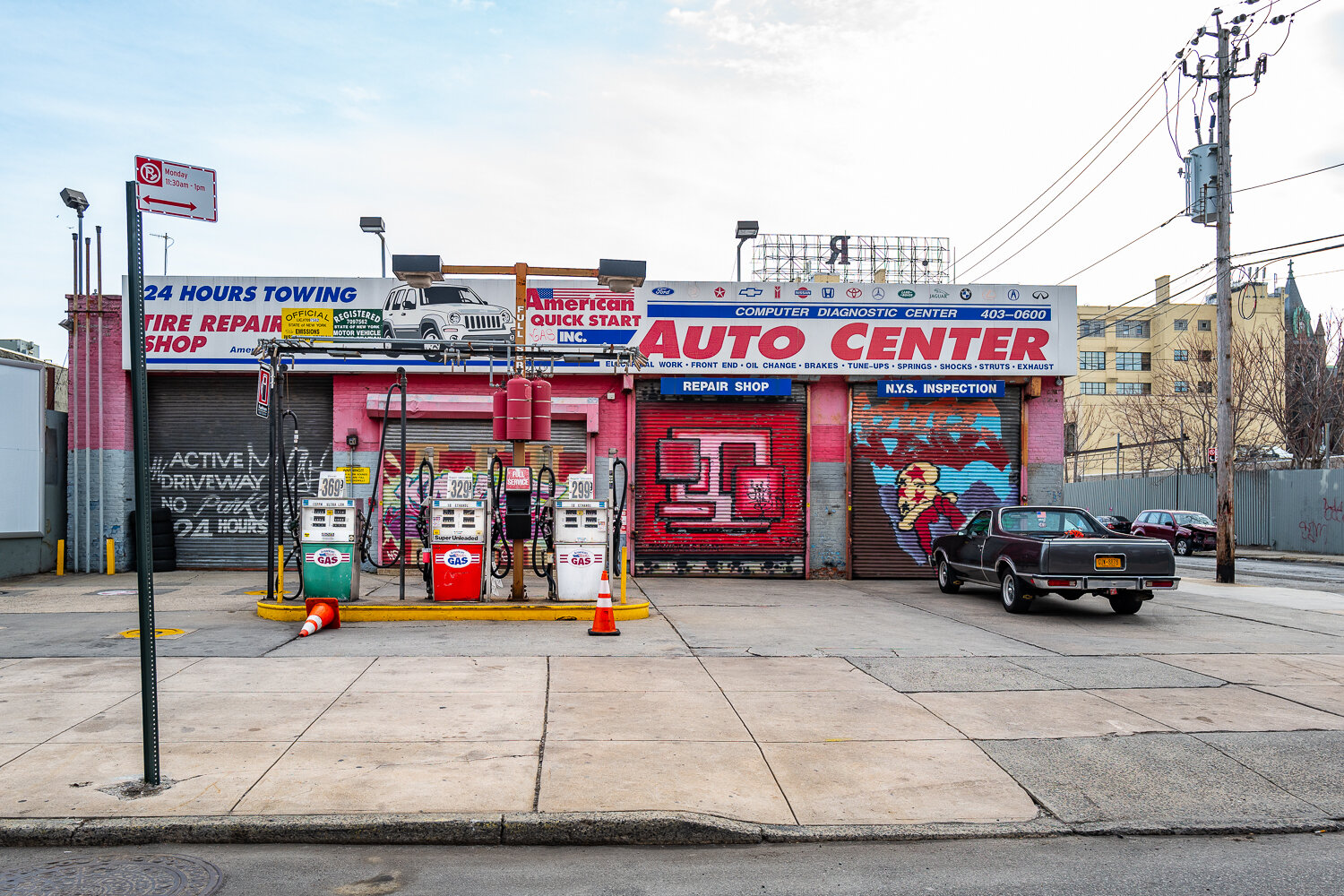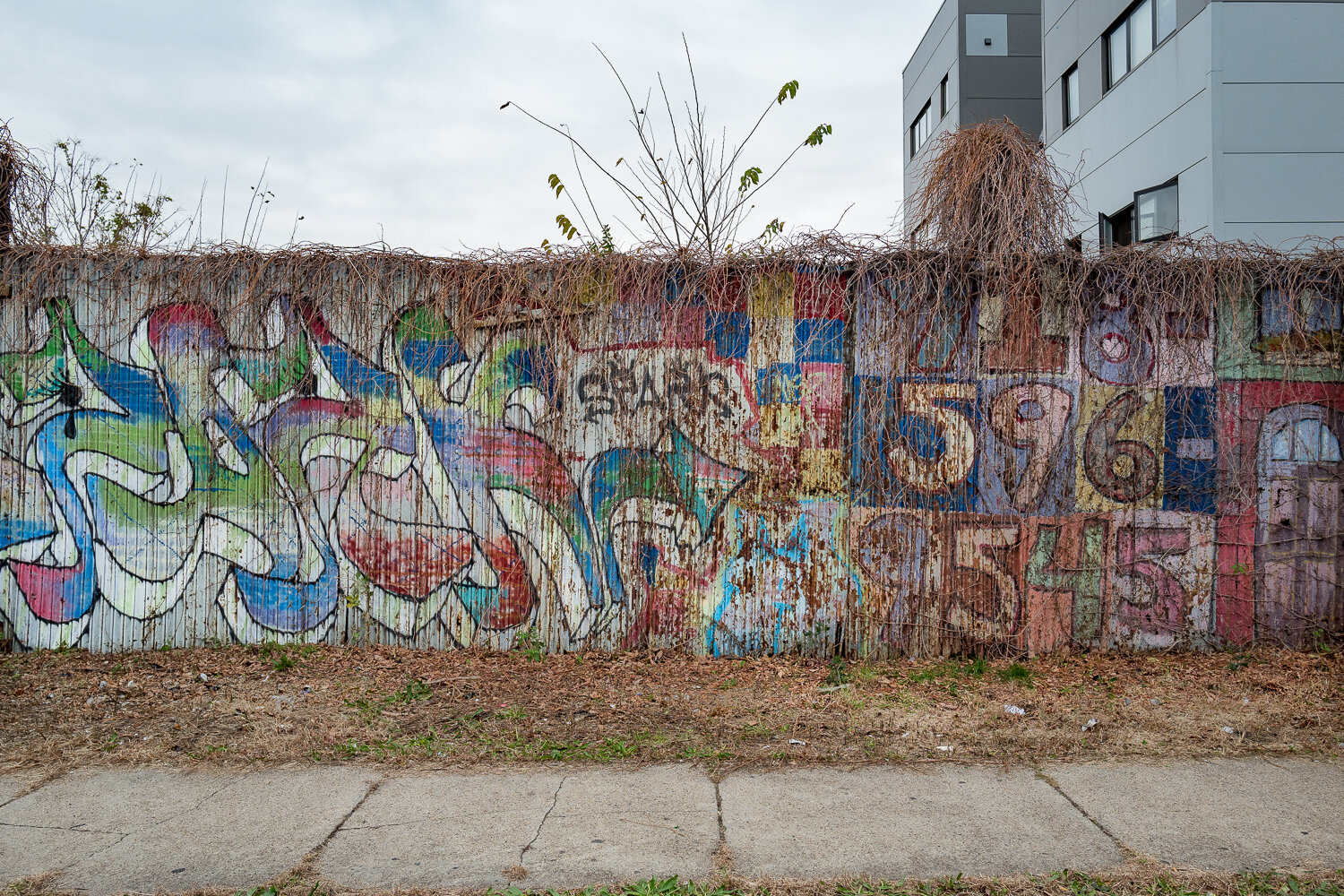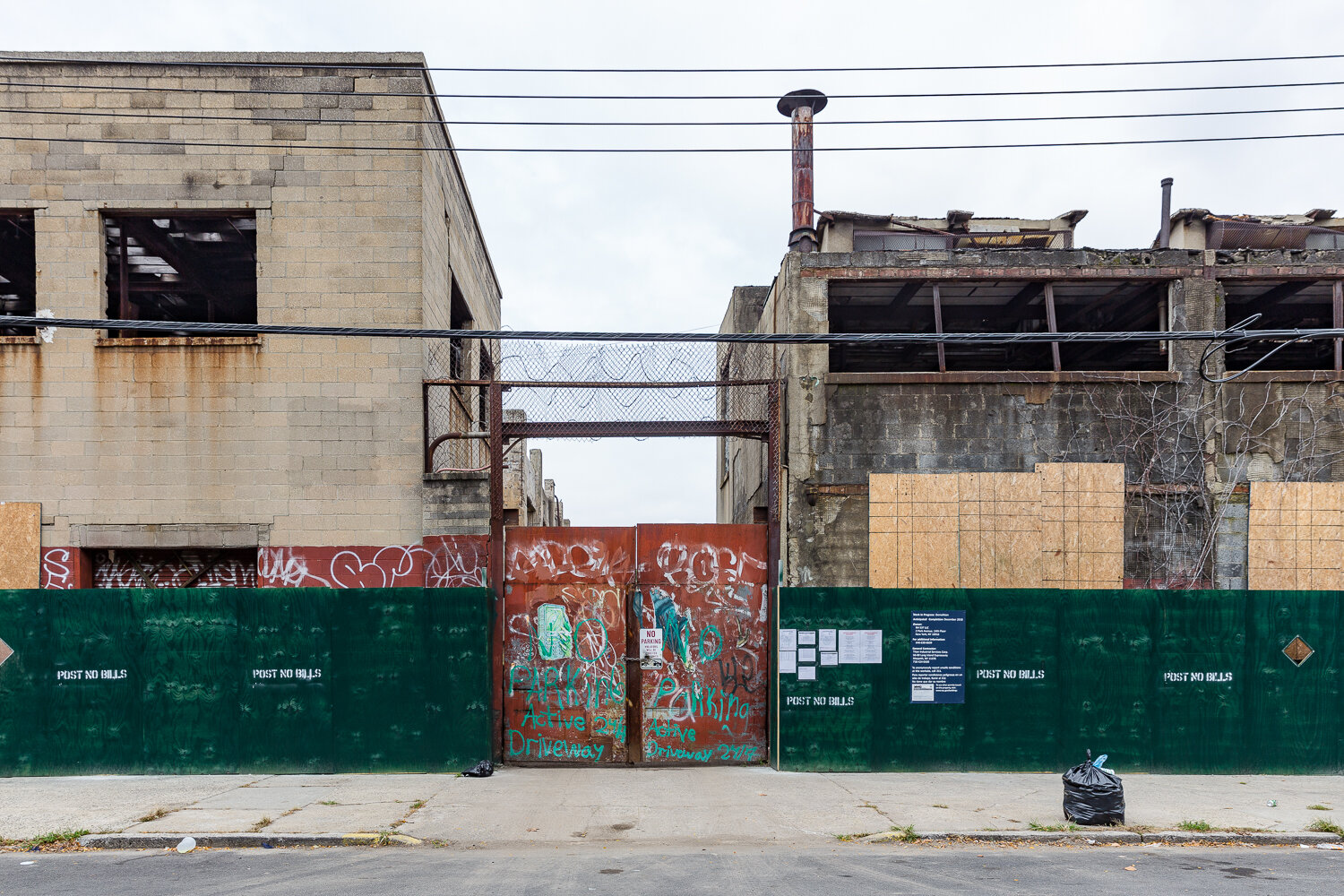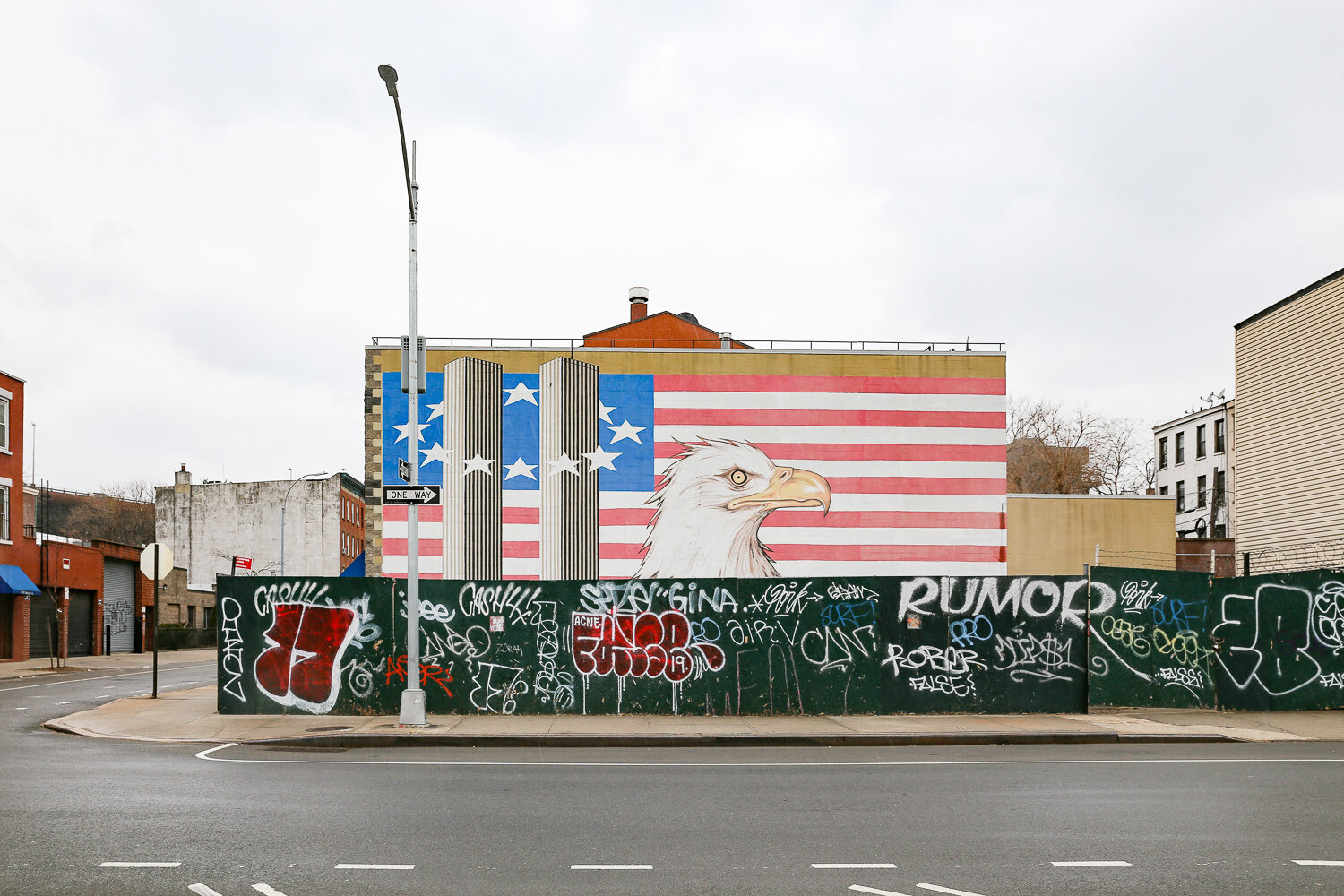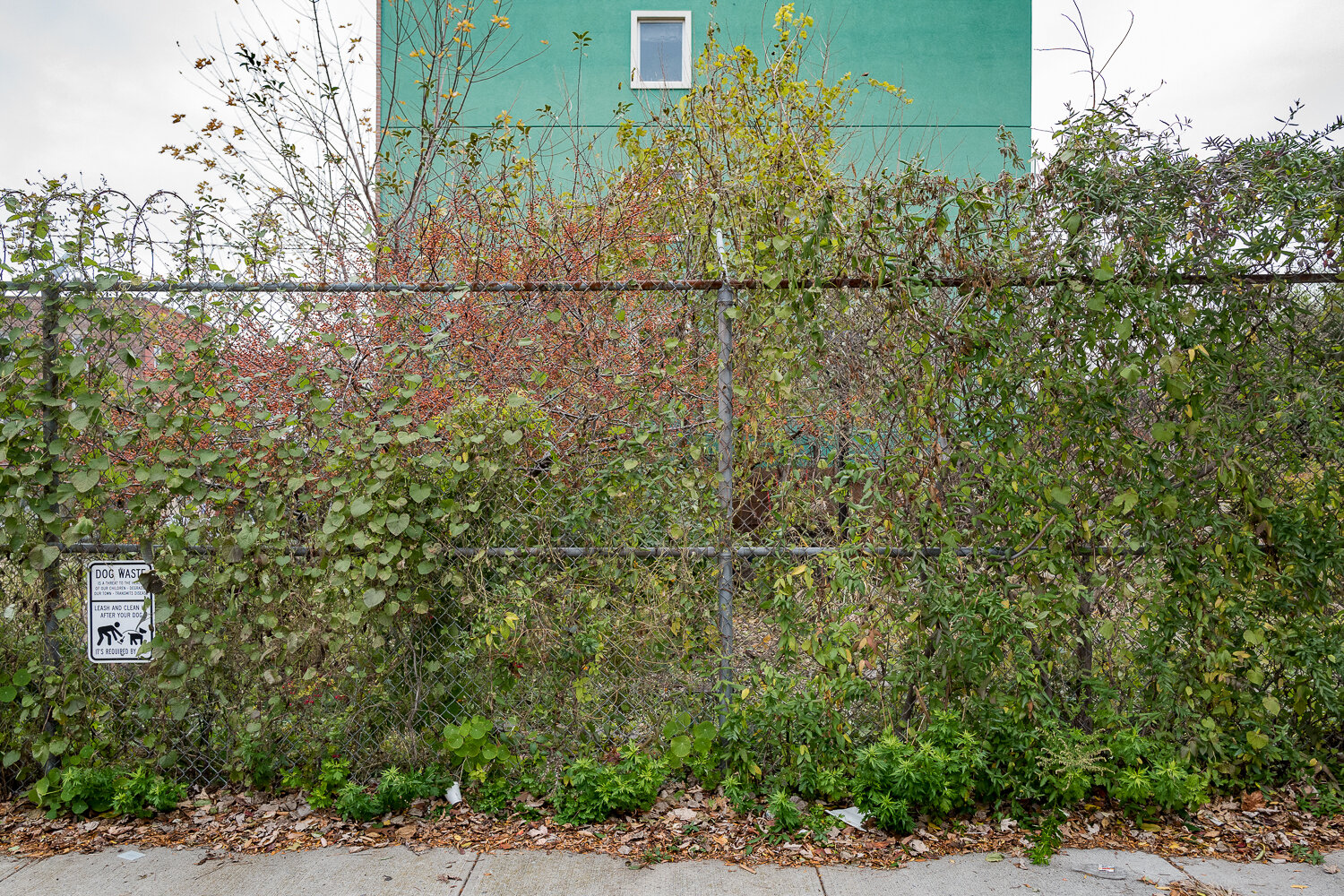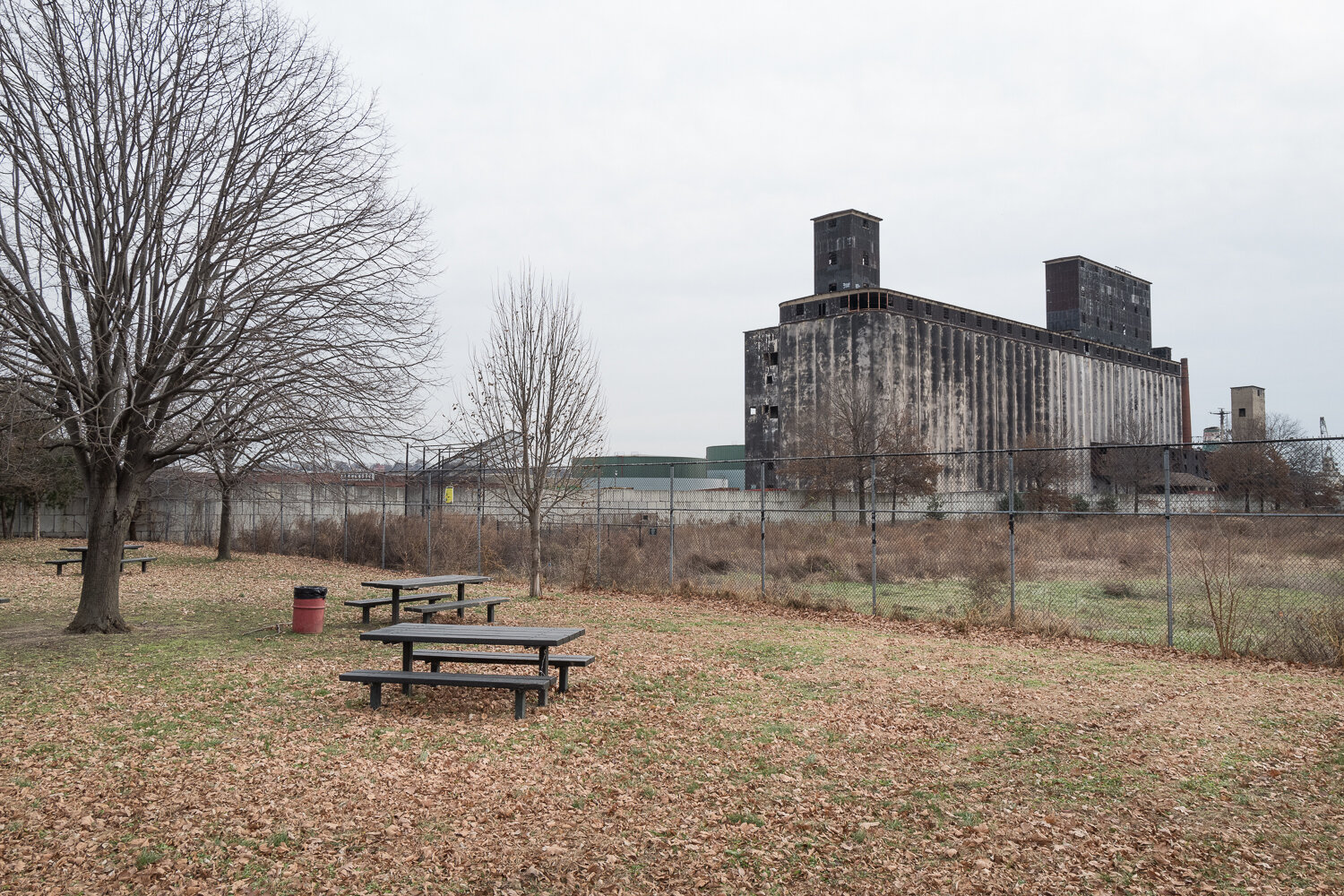RED HOOK | 2017–2019
I discovered Red Hook by chance, making a wrong turn getting off the Smith Street Train Station in Brooklyn. Over the course of the next two years, I returned to photograph this urban, gritty wonderland. I find a post industrial part of the city where the story is in the quiet details.
Roode Hoek, as named by the Dutch colonists who settled there in the 1600s, was named after the point of land that stuck out into the New York Bay, and the red clay soil upon which everything is built. On the surface it seems somewhat desolate, but is in fact in a constant state of flux and activity. It’s an especially disorientating space; constant change makes physical markers for navigating the streets unreliable. What was there one week, would be gone the next. However, there is the looming Gowanus Expressway. If you look, you can find it almost everywhere.
It reminded me of the disorientation I experienced when the Trade Towers disappeared—the physical anchor of the Trade Center that defined the downtown skyline, and imprinted on one’s psyche, was now absent. Within this impression of disorder, my photographs bring about a certain level of re-stabilizing, through a formal use of the photographic frame, use of vertical and horizontal lines, juxtaposed and layered upon the physical and visual chaos that I see before me. The vertical line replaces what is missing in this neighborhood. The tall buildings and the trees have all been stripped from the environment. We see strength and dignity in the in gates and lamp posts and the fences.
Dilapidated, abandoned buildings sit beside renovated architecture. Alongside the Victorian warehouses, are newly-built apartments. What comes to mind are cubist structures, particularly their foundations—the blocks and the cubes left from the industrial revolution. Building and destruction—we are left with the cube. Unlike the buildings in Manhattan, they don’t reach for the sky, but are low-level structures, and are not at all what we associate with the urban sprawl that is New York.
In my photographs, I do not embellish or glorify what I see. I am interested in discovering beauty away from traditional aesthetics. There is no artifice, with each scene photographed as I have found it, trash and all.
I have found my journey through Red Hook fascinating. Empty lots make me wonder what was there before; overgrown playing fields conjure the cheers of playing children. At once enthralled, I am somewhat saddened by the change. It makes me think about what Fritz Leiber—a writer of American Horror and Science Fiction in the early 1900s—wrote to a student; “Your picture looks like the breaking apart of the modern world. Families, nations, classes and loyalty are all falling apart. Things changing before you know them”.
PRINT SALES
Archival pigment Prints
Size: 13 3/8” x 20” image on 19 3/8” x 26” sheet
Edition: 10+2AP
Purchase Inquiries
